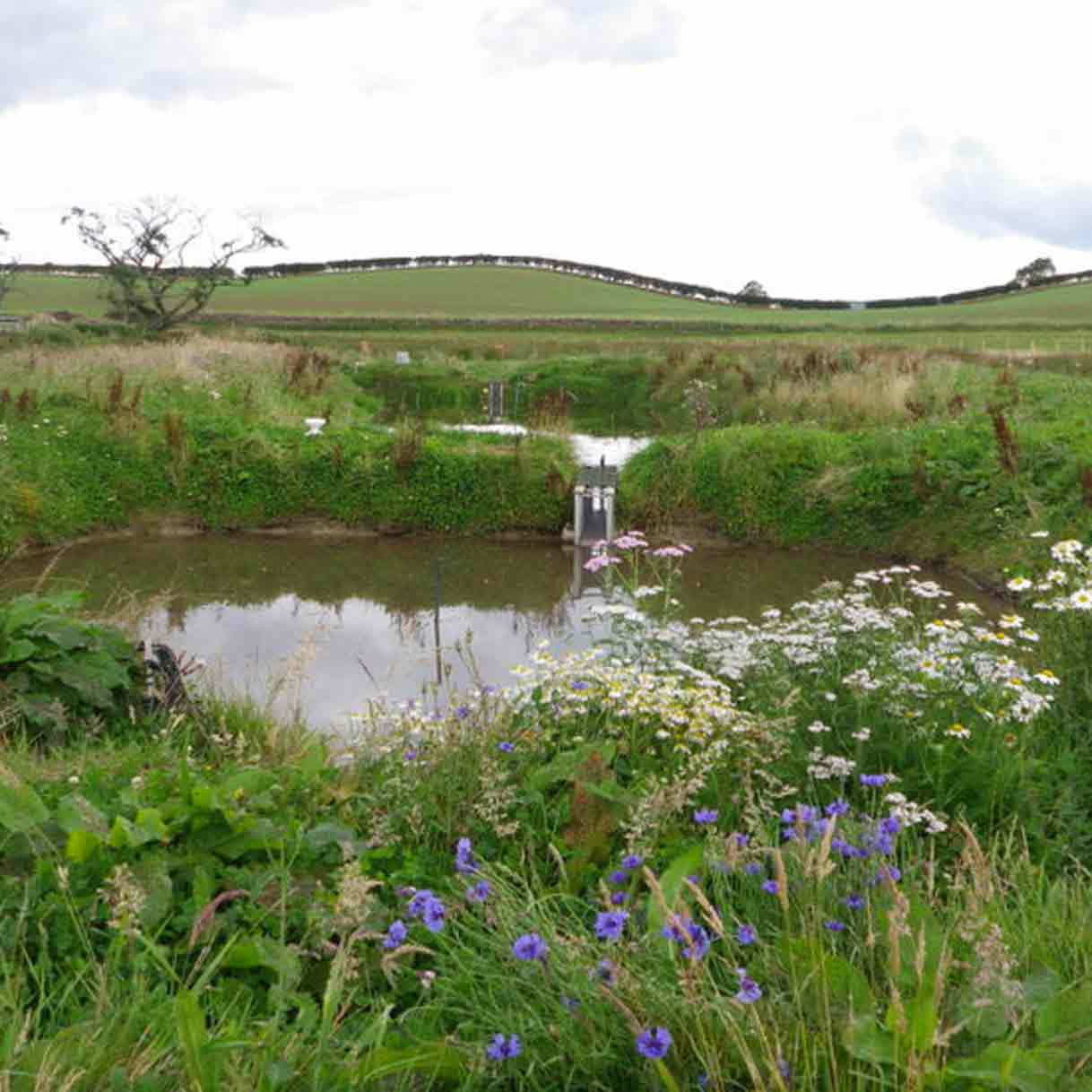Farm ponds cut agricultural water pollution
06/14/2012 00:00:00

At one time, every farm would have had a pond, but agricultural intensification has meant that many of them have been lost to make way for more farmland.
Working with farmers in Leicestershire and Cumbria, environmental scientists have created ten new field wetlands in areas of unproductive farmland such as field corners and buffer strips. The field wetlands - single or paired ponds of varying designs and sizes - are being monitored to measure how much runoff, sediment and nutrients they can trap.
Diffuse pollution from scattered sources on farms and fields, transported by runoff rainwater through the complex network of drains, ditches and streams running through our countryside, poses a significant threat to water quality. Each year, over two million tonnes of topsoil are washed from farmers’ fields as sediment, and nutrients such as nitrates and phosphates are also lost from agricultural land, polluting clean water and damaging wildlife habitats.
Researchers have found evidence that field wetlands offer a simple, cost-effective strategy for environmental protection. Their work, carried out over the last four years, shows that the ponds can intercept runoff and prevent sediment and nutrients reaching watercourses:
Results from the first stage of the project show:
• Up to 40 tonnes of sediment (the equivalent of about four London busses) was trapped in one year at the project’s Whinton Hill site in Cumbria
• The farm ponds also act as traps to store carbon
• Nitrogen and phosphorous concentrations in runoff waters were also reduced through the ponds, improving water quality at the field wetland outlets
Project lead Professor John Quinton of Lancaster University’s Environment Centre said: “Ponds and wetlands have benefits not only for wildlife; they can also store floodwater and can potentially be used to clean runoff pollutants before they reach downstream rivers and lakes.
“These results suggest that field wetlands can indeed be used to reduce diffuse pollution from agricultural land and we now need to work out how to make them even more effective and to look into the other benefits they can provide.”
Mike and Ruth Tuer of Crake Trees Manor, Crosby Ravensworth, Cumbria run one of the farms included in the project. They have already overseen a number of environmental initiatives on their 175-acre beef, sheep and arable farm, including voluntary woodland planting, wildlife areas, hedgerow protection and the introduction of field margins, and now the farm has three field wetlands.
Mike said: “We got involved because we’ve always had an environmental focus on our farm. I’m a great believer that if you pollute you should clean up. The researchers are here on and off, keeping us up to date and so far the results are looking good. We were amazed at the amount of sediment that became trapped in the ponds which can be spread back onto the land and does not end up elsewhere.”
James Turner of Brackenburgh Home Farms, Calthwaite, near Penrith in Cumbria has three field wetlands on his land.
He said: “I got involved with this project because I was interested to find out whether phosphate was leaching out of our soils. We had a perfect site for the ponds where a gutter held back field water, and often flooded a two acre marshy area.
“If we can capture leached phosphate and other minerals in the sediments in the first settling pond, then this could be dredged and re-applied to crops. Also, we have created quite an attractive conservation site on this waste ground.
“Our ponds are sited either in waste ground or field margins, which do not interfere with the farming operations. We may install further ponds on the farm if results and conditions are favourable.”
The project, which is called MOPS2, began in 2008 and will run until 2013. It is a collaborative research project, funded by Defra. Project partners are the Allerton Project (Game & Wildlife Conservation Trust), University of Reading, and the agricultural consultancy ADAS.
The four farms taking part in the scheme are: the Allerton Project, Loddington; Leicestershire, Crake Trees Manor, Crosby Ravensworth; Cumbria, Whinton Hill, near Plumpton of Brackenburgh Home Farms, Calthwaite; Cumbria, and Seborwens farm, Newton Rigg; Cumbria.